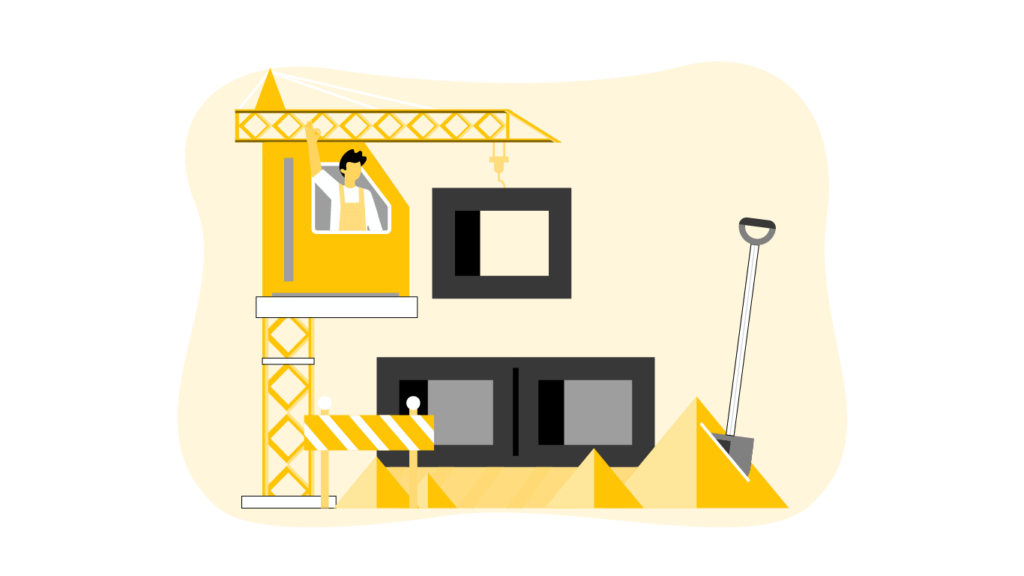Elimination of Hazards From the Workplace

Elimination of hazards is the key to workplace safety. Although eliminating all hazards might seem impossible, it is important to remember that every bit counts. These are statistics from the past two decades about eliminating hazards that demonstrate how important it is for us to continue our good work.
- In 2017, the United States had 2,848 workplace deaths.
- 917 of the 2,848 deaths were due to falls, slips, and trips.
- 791 people died from contact with equipment and objects.
There are many ways to eliminate hazards at work. Avoiding exposure to the hazard is the most obvious. You must take measures to reduce the danger if you cannot avoid exposure. You might use Personal Protective Equipment (PPE), engineering, or administrative controls.
“Eliminate hazards, before they eliminate you!”

Why Is Elimination of Hazards From the Workplace Important?
Eliminating hazards in a workplace environment. This helps create a safe work environment. Employees can avoid injuries and illnesses by eliminating hazards in the workplace.
According to OSHA, “Hazard elimination is the best method of controlling occupational hazards.” Because if done correctly, eliminating hazards can eliminate the risk of injury or illness in a task or work environment.”
As you can see, eliminating hazards is an important part of worker safety. Workplaces are making great progress every year, thanks to everyone’s hard work but there is still some way to go to make the workplace safer for everyone.
OSHA Regulations for the Elimination of Hazards
OSHA regulates against hazards throughout its standards aimed at various different industries. This includes the necessity for guardrails when working at height, for example. But there is a specific piece of legislation that relates to hazard elimination:
- 1910.1200 – Hazard Communication, relating to toxic and hazardous substances
Danger of Hazards in the Workplace
Many hazards lurk in the workplace. It is important to eliminate them all. Depending on the hazard, they can cause injury, illness or even death. There are many different types of hazard and they all offer their own element of danger.
- Trips, falls and falling objects can happen when there are hazards such as spills on the floor, broken guardrails and poorly maintained conditions.
- Chemical exposure from poorly stored hazardous materials is a concern for people working with these substances.
- Fire hazards such as loose wires and flammable materials near sparks are another issue.
- Electrical hazards can cause electrocution or electric shock
- Repetitive motion injury is a hazard for many people working in jobs that require the same movements every day.
Elimination of Hazard Toolbox Talk From the Workplace
You’re here because you are looking for a comprehensive toolbox talk template on eliminating hazards. This template will allow you to communicate the importance and urgency of eliminating workplace hazards.
A safety program must include the elimination of hazards. Hazard elimination is the process of identifying and eliminating potential hazards from the workplace.
There are many possible hazards at work. It is important to be alert to these potential hazards. Here are some common hazards:
- Chemicals
- Machinery
- Slips and trips to the falls
- Electrical equipment
- Working at heights
Eliminating hazards must be a continuous process. As new hazards become apparent, they must either be eliminated or controlled.
To reduce the chance of injury, it is important to implement effective control measures when the elimination of hazards is not feasible.
These common control measures include:
- Isolation
- Substitution
- Engineering controls
- Administrative controls
- Personal protective equipment

Illness/Injuries Related to the Elimination of Hazards From the Workplace
Elimination of hazards is an important part of any safety program. It is possible to make the workplace safer for everyone by eliminating any potential harm.
Eliminating hazards from work can cause a wide range of illnesses and injuries.
Here are some examples:
- Cuts or bruises caused by falling objects
- Fractures caused by slips or falls
- Dislocations caused by tripping on hazards
- Strains and sprains resulting from lifting heavy items
It is crucial to seek medical attention immediately if you have sustained any of these injuries.
Eliminating hazards at work can prevent these injuries like:
- Infections resulting from exposure to hazardous substances
- Cancer caused by carcinogen exposure
- Allergies resulting from allergen exposure
- Asthma due to exposure to airborne allergens
- Respiratory issues from airborne contaminants
- Skin irritations or allergic reactions can cause skin problems
- Eye irritation from chemicals, fumes, or dust.
It is essential to seek medical attention as soon as you feel any of these symptoms. Eliminating hazards from work can be dangerous, and it is crucial to remain safe. We appreciate your time!
Questions To Test Employee Knowledge on the Elimination of Hazards From the Workplace
- What hazards are there in your workplace?
- Can these hazards be eliminated?
- What could happen if these hazards were not eliminated?
- What are some safety practices you can use to avoid workplace injuries?
Promote Elimination of Hazards From the Workplace With This Email Template
Hello,
We should always think about ways to eliminate hazards from the workplace. Here are a few ideas to get you started:
- Take breaks during the day to stretch out and move about. This will reduce the chance of getting a musculoskeletal injury.
- Use Personal Protective Equipment (PPE) when handling hazardous materials.
- Perform safety audits regularly to identify potential hazards and implement controls to reduce those risks.
We can make the workplace safer by taking proactive measures. Let’s get going!
Video on the Elimination of Hazards
Elimination of Hazards Meme
Conclusion About the Elimination of Hazards From the Workplace
There are many ways to eliminate workplace hazards. However, a few strategies can be used to create a safer workplace for employees.
First, communication between workers and management is crucial. Every worker should be aware of potential hazards and know what to do about them. Safety meetings and training sessions can help you achieve this.
Effective hazard prevention measures must be implemented. These could include personal protective equipment and safe work practices.
Third, it is important to conduct regular inspections of your workplace to identify potential hazards. These inspections should only be done by qualified professionals. Once they are complete, appropriate action should be taken to eliminate the danger.
By following these key strategies, employers can make their workplace safer and reduce the chance of injuries and accidents.


